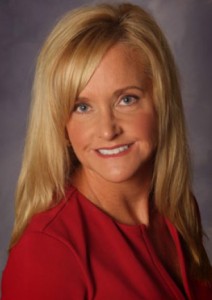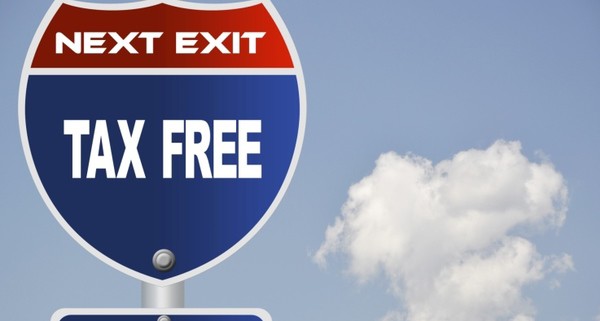Turn Your Taxable Portfolio Into A Tax-Free Retirement Account
Long-time federal workers have a unique opportunity for tax-free retirement income…but
immediate action is vital. Under President Obama’s proposed budget, aftertax rollovers to Roth IRAs will end next year. Throughout 2015, Civil Service Retirement System (CSRS) and CSRS Offset employees can still lock in the benefits.
THE REWARDS OF ROTH IRAs
Savvy investors understand the advantages of Roth IRAs. Contributions arn’t tax-deductible,
but all withdrawals can be tax-free. So you don’t have to share your investment earnings with
the IRS.
However, contributions to Roth IRAs are limited to modest amounts. Besides making
contributions, you can convert a traditional IRA of any size to a Roth IRA—but that could mean paying a huge tax bill. Some federal employees can overcome those obstacles. If you are in the CSRS, you can contribute to the little-known Voluntary Contribution Program.
Depending on your lifetime earnings (as explained below), you may be able to move hundreds
of thousands of dollars into a Roth IRA without owing tax. That $100,000 or $200,000 or
$300,000 now sitting in your taxable account can be relocated into a tax-free Roth IRA, without generating a penny of income tax! This opportunity will vanish after this year, under the Obama proposal.
DELVING INTO THE DETAILS
Roth IRAs offer major tax benefits. After you’ve had the account for at least five years and
you’ve reached age 59-1/2, all withdrawals are tax-free.
Suppose a hypothetical John Smith contributes a total of $100,000 to a Roth IRA. Over the
years, that account might grow to $200,000. In retirement, John can withdraw as much as he
wants, year after year, without owing any income tax.
In fact, Roth IRA withdrawals don’t impact your taxable income at all. Thus, these withdrawals won’t increase the tax John might owe on his Social Security benefits; they won’t result in reduced tax deductions for medical expenses or other tax return items.
But that’s not all. Suppose John discovers that he doesn’t need to tap his Roth IRA in
retirement. In that case, he can leave the account alone, letting it grow to perhaps $250,000 or
$300,000 or more, untaxed. While owners of traditional IRAs must take certain distributions
each year, after age 70-1/2, Roth IRA owners never have required withdrawals.
Thus, John can leave his Roth IRA alone, if he wishes, to pass intact to his surviving spouse or his children or grandchildren. Then John’s beneficiaries can take tax-free withdrawals from the inherited Roth IRA—what a marvelous legacy that can be.
LEARNING THE LIMITS
If you think there must be a catch to Roth IRAs, you’re right. In fact, there are several. For
instance, Roth IRAs are funded only with aftertax dollars. You never get a deduction for putting money into a Roth IRA.
To contribute to a Roth IRA, you must have earned income or be married to a worker. Even
then, annual contributions now are capped at $5,500 ($6,500 if you’re 50 or older).
Income limits apply, too. In 2015, you can’t contribute to a Roth IRA with income over
$131,000, or $193,000 for married couples filing jointly. Thus, if John and his wife Mary have
combined income of $200,000 this year, they can’t contribute to a Roth IRA.
Besides annual contributions, you also can fund a Roth IRA by converting a traditional IRA.
However, such conversions are taxable.
Suppose that John now has $250,000 in a traditional IRA. His contributions were tax-deductible and investment earnings inside that account have been tax-deferred.
If John converts that traditional IRA to a Roth IRA, he’ll report $250,000 of taxable income on this year’s tax return. Once all the various taxes and surtaxes and stealth taxes are calculated, John could owe well over $100,000 in tax on that conversion!
THE VCP OPPORTUNITY
Let’s take this example one step further. Assume that John has worked for the federal
government for decades, is still working there, and he is under CSRS.
In this situation, John is eligible for the VCP. That is, he can make a contribution to this
supplementary retirement fund, administered by the federal Office of Personnel Management
(OPM).
Under the VCP, contributions can be as large as 10% of your total lifetime basic earnings in
federal service. If you have taken any money from the CSRS, that amount plus interest must be re-deposited in full before you can make any VCP contributions.
Continuing our example, suppose that John has earned a total of $1,500,000 over his career as a federal employee; John has not taken any CSRS withdrawals. If so, John can contribute any amount up to $150,000 (10% of $1,500,000) to the VCP.
Say that John looks over his taxable brokerage and bank and mutual fund accounts. Each year,
he’s been paying tax on interest and dividends and capital gains.
So John moves $150,000 from these taxable accounts to the VCP. Immediately after the transfer is confirmed, John moves that $150,000 to a Roth IRA. He’ll have converted that
amount from taxable accounts to a tax-free account without triggering any income tax. Then
John can invest his Roth IRA in stocks, bonds, bank accounts or other acceptable vehicles.
Going forward, John can take as much or as little as he’d like from his Roth IRA, tax-free. That’s true even if income tax rates move higher, in the future.
Once John has reached age 59 ½ and five years have passed since he has established a Roth IRA, all withdrawals–including earnings—will be tax-free. Nevertheless, you don’t have to wait that long, if you need cash flow before reaching those milestones.
In our example, John funded his Roth IRA with $150,000 of aftertax money. Consequently, John can withdraw any amount up to that $150,000 at any time, without owing income tax. (In some instances, an early withdrawal penalty may apply.) The longer you wait to take Roth IRA distributions often will provide the best result, because the delay can increase the amount of tax-free earnings inside the account.
PREPARING THE PAPERWORK
VCP contributions must be made while you are still working within the CSRS. After you retire,
this opportunity disappears.
Indeed, current CSRS employees have every incentive to make VCP contributions now, even if
you are a few years from your planned retirement. If you wait until after year-end 2015, you
may have waited too long, if the President’s proposal is approved and aftertax Roth IRA
rollovers are disallowed.
To proceed, you must first liquidate any holdings in your investment accounts that you want to use for VCP contributions. You make VCP contributions with cash, not with securities transfers.
To execute a voluntary contribution, start by completing form SF 2804 and returning it to your agency’s personnel office. Once the people in that office confirm you do not owe any deposits or re-deposits on your federal retirement benefits, they will forward this form to OPM. (As mentioned, you are not eligible for the VCP if you owe any retirement deposits.) Do not send any money with your application.
OPM employees are currently focusing on processing pensions for retiring government
employees. Establishing VCP accounts may not be a high priority at OPM, so be prepared for
possible delays in setting up your account.
Eventually, you will receive notification from OPM that your application has been accepted and your account has been set up. You will receive a VCP account number to use in all relevant
correspondence with OPM.
Once you have an account number, you can make your VCP contributions. They must be made
by check, in a multiple of $25, with your VCP account number on all checks.
After you have received confirmation of your VCP contributions, you’ll be ready to convert that
amount to a Roth IRA. To do so, complete form RI 38-124 and send it directly to OPM (the
address is on the form). By doing this immediately, you’ll avoid accumulating any taxable
interest within the VCP.
To make sure this process goes smoothly, you should work with a professional who is very
familiar with both federal benefits and tax planning for retirement. Such a pro will be able to
ascertain the amount you can contribute and help you handle all the financial transactions.
Your professional advisor probably will encourage you to start this process now, before the law
changes. Give yourself ample time because the process can take a while.
If you’re eligible for a VCP contribution and a subsequent Roth IRA contribution, don’t miss out on what might be your last chance for this great tax-saving opportunity!

Carol Schmidlin does not provide tax and/or legal advice, but will work with your attorney or independent tax or legal advisor. A qualified tax professional or independent legal counsel should review the tax implications of any securities transaction. This material is not intended to replace the advice of a qualified attorney, tax advisor, financial advisor, or
insurance agent. Before making any financial commitment regarding the issues discussed here, consult with the appropriate professional advisor. Franklin Planning does not offer tax planning or legal services, but will provide references to accounting, tax services or legal providers. They will also work with your attorney or independent tax or
legal advisor.
Securities offered through GF Investment Services, LLC. Member FINRA/SIPC. 2080 Ringling Blvd., Third Floor, Sarasota,
FL, 34237. (941) 441.1902. Investment Advisory Services offered through Global Financial Private Capital, LLC, an SEC
Registered Investment Adviser.




i have a question I have $270,000 in mya traditional TSP can I covert this whole amount to a Roth before 2o15 ends I jab been a cars employee for 37 years. Thanks